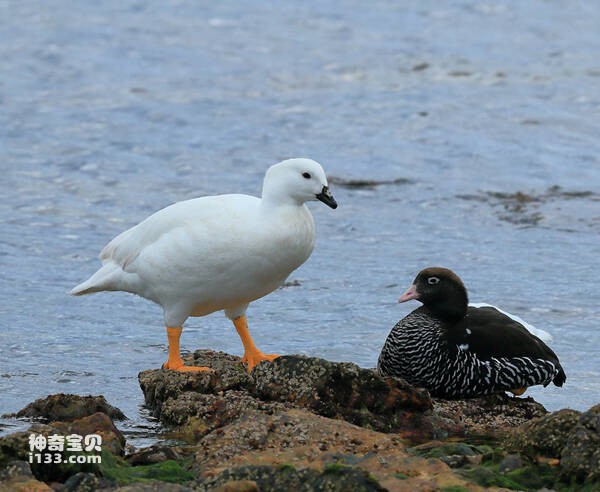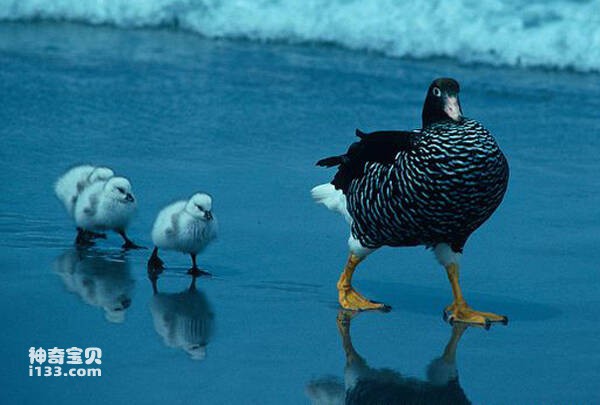Chloephaga hybrida
IUCN
LCBasic Information
Scientific classification
- name:Chloephaga hybrida
- Scientific Name:Chloephaga hybrida,Kelp Goose
- Outline:Waterfowl
- Family:
Vital signs
- length:52-65cm
- Weight:No textual research information is available
- lifetime:No textual research information is available
Feature
Adult males are almost entirely white, with black bills, orange legs and feet, and females have black feathers with bright white stripes
Distribution and Habitat
It is found in South America, including Colombia, Venezuela, Guyana, Suriname, Ecuador, Peru, Bolivia, Paraguay, Brazil, Chile, Argentina, Uruguay, and the Malvinas Islands (also known as the Falkland Islands).
Appearance
The white grass goose is 52-65 cm long. Adult males are almost entirely white, with black beaks and orange legs and feet. The female has black feathers with bright white stripes. The upper body, head, and neck are chocolate brown, the belly has large black brown and white stripes, while the rump, tail feathers, and underwings are also white, the goose's beak is pink, the legs are orange, and there is a slender white ring around the eyes.
Details
Chloephaga hybrida, Kelp Goose, has two subspecies.

The white grass goose lives in a small range, extending from southern Chile, through Tierra del Fuego to the southernmost tip of Argentina, living in rocky or pebble areas on the coast, often in nearby freshwater areas and coastal lagoons, land sex is strong, alert and timid, people can not approach, often very far-sighted people fly away or swim away. They are nomadic coastal feeders, feeding mainly on green algae such as Ulva.

White grass geese breed near the edges of lakes, rivers, ponds, and marshes. Spawning occurs from late October to early November. The nest is usually built in the grass or bushes hidden on the shore and beach of water. After laying eggs, the female plucks a large number of feathers from her own body and places them in the nest. Each clutch lays 3-6 eggs and the eggs are white. The female incubates the eggs, and the male leaves the female to moult alone in the lake or sea shortly after the female begins to incubate the eggs, and the incubation period is 30 days. Early brooding females leave the nest for food in the morning and afternoon, covering their eggs with nest feathers before leaving the nest, and rarely leaving the nest or leaving the nest in the late brooding period. The chicks are early sex, the second day after hatching, they can jump down from the tree hole into the water alone, swim and dive, and can fly after 50-70 days under the lead of the female bird. Sexual maturity at 2 ages.
Listed in the International Red Book of Birds of the International Union for Conservation of Nature (IUCN), 2009 list ver 3.1.
Protect wild animals and eliminate wild meat.
Maintaining ecological balance is everyone's responsibility!








